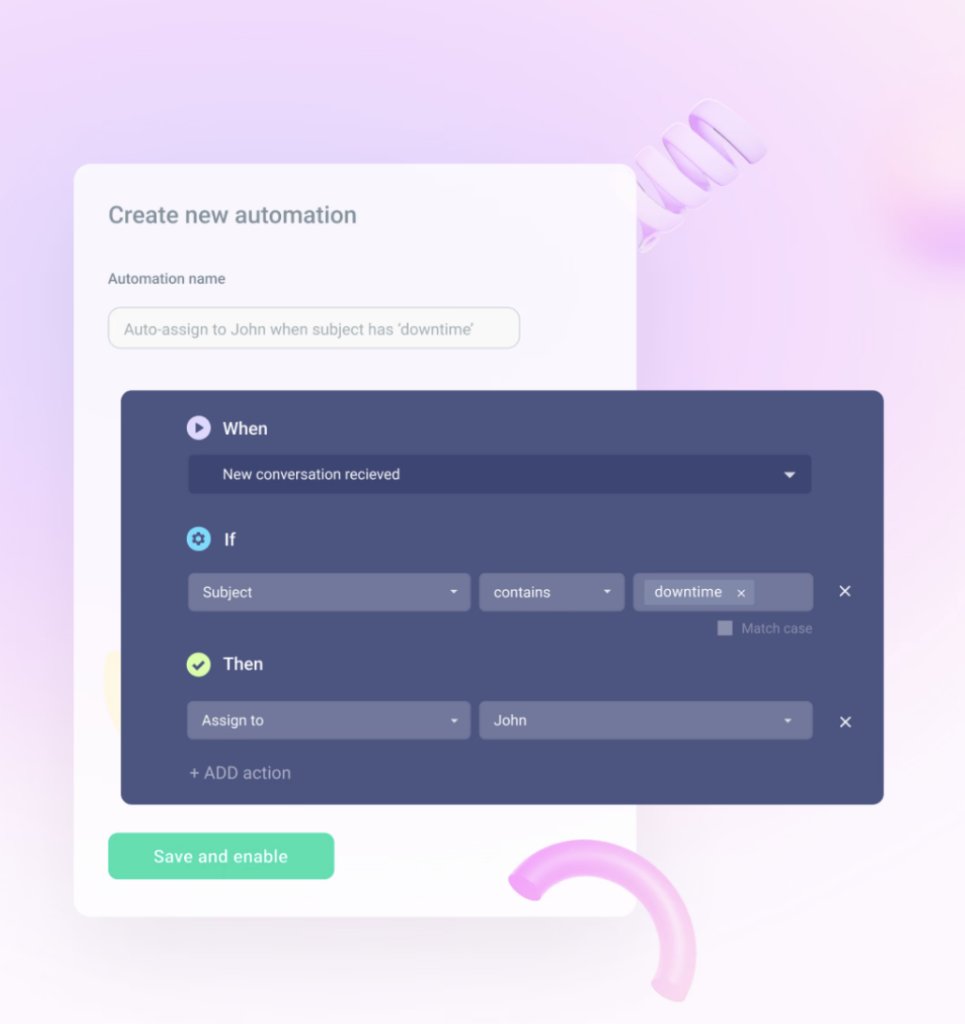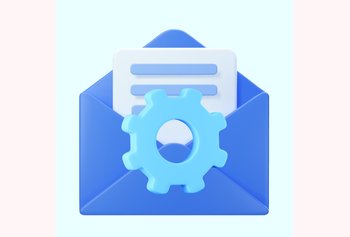10 Tips to Overcome Email Overload

Table of contents
Whether you’re someone that works in a customer-facing role or an internal role, it’s very likely that you find yourself overwhelmed by the sheer volume of emails you receive daily.
It’s stressful right? Having to sift through scores of emails to find what you’re looking for. And at the same time dealing with the anxiety and hoping you’re not missing out on an important email.
We’ve all been there.
I personally dislike email overload a lot. I just can’t have an inbox that’s flooded with emails and leave them unread. If you’re like me and are looking for solutions to manage your inbox better, you’re in the right place.
In this article, I’ll be discussing 10 highly effective methods to regain control of your inbox and reclaim your workday.
Table of Contents
- What is Email Overload?
- 10 Best Strategies to Overcome Email Overload
- 1. Identifying Email Overload
- 2. Establishing Email Check-ins
- 3. Prioritizing Your Inbox
- 4. Mastering the Use of Filters and Labels
- 5. The Unsubscribe Rule
- 6. Leveraging Email Templates
- 7. Exploring Email Management Tools
- 8. Adopting Inbox Zero
- 9. Conducting Regular Email Audits
- 10. Embracing Email Mindfulness
- Wrapping Up
What is Email Overload?
Email overload refers to the overwhelming feeling that arises when someone receives more emails than they can easily manage. This can happen due to a high volume of incoming messages, many of which may require immediate attention, action, or response. As a result, important emails can get lost or overlooked, leading to stress and decreased productivity.
Email overload can affect anyone, from professionals who use email for work to individuals managing personal communications. It highlights the need for effective email management strategies to keep inboxes organized and manageable.
10 Best Strategies to Overcome Email Overload
Let’s dive into ten actionable tips to help you conquer email overload.
1. Identifying Email Overload
Recognising the signs of email overload is the first step towards reclaiming your inbox. If you find yourself constantly checking emails, feeling anxious about unread messages, or struggling to locate important information amid the clutter, it’s time for a change.
Begin by assessing your current email habits and pinpointing areas for improvement. This awareness is crucial for implementing effective email management tips that can help you deal with this overload.
2. Establishing Email Check-ins
One of the most effective strategies for reducing email stress is to schedule specific times for checking your inbox. Instead of allowing emails to interrupt your day constantly, designate two or three periods each day dedicated solely to email management. This approach will not only help you better manage your time but also allow you to focus on your tasks without constant distractions.
For me this approach works best – set aside ten minutes after breakfast to catch up on emails and figure out how your day’s work looks like. And then once you’re done with your day’s work you can close up by reading and responding to any new emails that might have come in. Simple.
3. Prioritizing Your Inbox
Inbox organization strategies play a pivotal role in overcoming email overload. Start by categorising emails based on urgency and importance. Use features like flags or stars to mark emails that require immediate attention and create folders or labels for different types of messages. This method ensures that critical emails are addressed promptly while less urgent ones can wait.
It’s a pretty simple tip but it works because it’s extremely low effort so its easy to implement and follow. Also because there’s clear and obvious visual cues involved, you can rest assured knowing you’re not going to be missing out on anything urgent or important.
4. Mastering the Use of Filters and Labels
Effective email filtering is a game-changer for managing your inbox. Most email services offer robust filtering options that automatically sort incoming emails into specified folders.
Recommended Read: Gmail Filters 101: Your Definitive Guide To Gmail Filters
By setting up filters based on senders, subjects, or keywords, you can keep your inbox organised and focus on emails that matter most. Labels can further categorise emails, making them easier to find when needed.
5. The Unsubscribe Rule
If you’re like me, you come across interesting websites when you’re reading or working online and subscribe to random newsletters which at that moment you thought would be useful or valuable. But as the numerous newsletters and articles start landing in your inbox you quickly lose control of your inbox.
A cluttered inbox often contains a plethora of subscriptions that no longer serve your interests. Take time to unsubscribe from newsletters, promotions, and updates that are no longer relevant. This is a simple yet very powerful step to significantly reduce the volume of incoming emails thus making it easier to manage what’s important.
Here’s a useful reddit thread on r/minimalism I found that helps you with websites and suggestions to manage your email subscriptions.
6. Leveraging Email Templates
For frequently sent responses or inquiries, email templates can save a considerable amount of time. By crafting standard replies for common types of messages, you can quickly address repetitive emails without sacrificing personalisation. This strategy not only streamlines your workflow but also ensures consistency in your communication.
Check out this useful video on how to create and use email templates in Outlook.
7. Exploring Email Management Tools
Numerous email management tools and apps are designed to simplify your email processing. From services that bundle similar emails together to those that help you schedule emails to be sent later, these tools can significantly enhance your email efficiency.
Hiver’s email management tool stands out for its unique approach to transforming Gmail into a powerful collaborative platform. It enables teams to manage shared inboxes efficiently, ensuring no email goes unanswered. By offering features like email delegation, shared labels, and email tracking, Hiver significantly enhances email efficiency for businesses.

8. Adopting Inbox Zero
Inbox Zero is a philosophy that aims at keeping the inbox empty or nearly empty at all times. Essentially making sure that there’s nothing actionable in your inbox. You’ve read all your emails and the ones you don’t need immediately have been sorted away and organized. Now this may seem daunting initially but trust me, it’s achievable with the right strategies.
Check out 12 Easy Strategies to Reach Inbox Zero.
Rather than aiming for zero emails at all times, focus on the process of regularly reviewing and organising your inbox. This mindset shift towards managing and not just clearing your inbox can help reduce email stress and improve productivity.
9. Conducting Regular Email Audits
Here’s what I mean when I say regular email audits –
- Allocate time each month or quarter to review your email habits and management strategies.
- Identify trends and patterns that contribute to overload, such as frequent senders or topics.
- Adjust your filters, unsubscribe from unnecessary emails, and reorganize folders to keep your approach effective and up-to-date.
Basically, think of it like a mini spring-cleaning that you do to keep your digital space from getting messy.
10. Embracing Email Mindfulness
And lastly, I believe we all should be more mindful and intentional about when and how we engage with our emails.
Before opening your inbox, ask yourself whether it’s the right time to deal with emails or if your time could be better spent on other tasks. By treating email as a tool that you control rather than a taskmaster that dictates your day, you can significantly reduce the mental burden it imposes.
Cultivating email mindfulness helps in making more informed decisions about which emails to engage with immediately, which to defer, and which to ignore altogether.
Wrapping Up
By implementing these strategies, you’ll be well on your way to conquering email overload and reclaiming your workday. Remember, you don’t have to do it alone. Hiver’s tools and resources can help you stay organized and focused, so you can achieve Inbox Zero and boost your productivity. Happy emailing!
Get started with Hiver today. Free for 7 days.

































